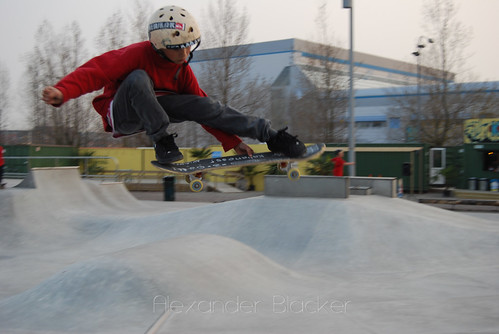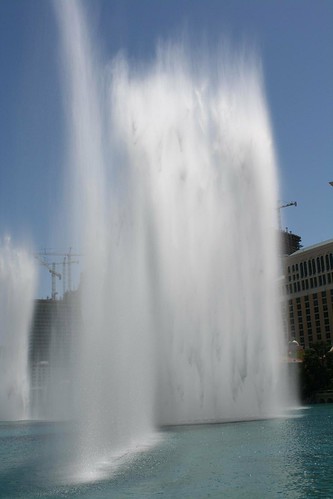orginal post by dps blogI have covered apreture and i have covered ISO. Now its time for shutter speeds!
What is Shutter Speeds?
Lets make it simple: "its the amount of time the shutter is open" - pretty simple, right!
This used to mean in film photography, that it was the amount of time that the film was exposed to the scene your were photographing, now its the sensor of your camera instead of film. Or if you want its the amount of time the "eye" is open to grab as much light as it needs or you want to give it.
Let me attempt to break down the topic into some bite sized pieces that should help digital camera owners trying to get their head around shutter speed:
-
Shutter speed is measured in seconds - or in most cases fractions of seconds. The bigger the denominator the faster the speed (ie 1/1000 is much faster than 1/30).
-
In most cases you’ll probably be using shutter speeds of 1/60th of a second or faster. This is pretty much because its rather easy to cause camera shake when your using anything "above" this or slower then this. I can handhold at 1/6th but it has taken me a few time to practice this, but you can also do this if you keep working on it!
-
If you’re using a slow shutter speed (anything slower than 1/60) its recommended you use a tripod or some some type of image stabilization, or a place were you can lean the camera or if you can lay down and use your elbows as support.
-
Shutter speeds available to you on your camera will usually double (approximately) with each setting. As a result you’ll usually have the options for the following shutter speeds - 1/500, 1/250, 1/125, 1/60, 1/30, 1/15, 1/8 etc. This ‘doubling’ is handy to keep in mind as aperture settings also double the amount of light that is let in - as a result increasing shutter speed by one stop and decreasing aperture by one stop should give you similar exposure levels (but we’ll talk more about this in a future post).
-
Most DSLR's give you the option of slow shutter speeds, or long exposures as some people call these are not fractions of seconds but are measured in seconds. This will be displayed in your camera as the symbol: " meaning seconds, from 1 second to 30 or when you go into bulb or B-mode. Bulb mode lets you keep the shutter open for as long as you hold it down, so you can in theory use shutter speeds of hours days if you wanted to, not that i know anyone that has done this but i can be done. But a note here, the longer the shutter speed is open the more reluctant you are to get digital noise in your images.
-
When considering what shutter speed to use in an image you should always ask yourself whether anything in your scene is moving and how you’d like to capture that movement. If there is movement in your scene you have the choice of either freezing the movement (so it looks still) or letting the moving object intentionally blur (giving it a sense of movement).

-
To freeze movement in an image you want to user a faster shutter speed, and if you want if you want the movement blur you’ll want to choose a slower shutter speed. The actual speeds you should choose will vary depending upon the speed of the subject in your shot and how much you want it to be blurred.
But motion is not always bad there are moments where you just want to add some movement to your sill photo but have a main subjects frozen, this can be achieved by using a rather slow shutter speed of lets say 1/6th which will hopefully freeze some movement and if you have a train passing by or something that will be blurred, thus adding motion to your image. Which in my opinion looks great. This can also be applied to give water that dreamy effect as you can see on the image below by our reader Rob Coughey

-
Focal Length and Shutter Speed - another thing to consider when choosing shutter speed is the focal length of the lens you’re using. Longer focal lengths will accentuate the amount of camera shake you have and so you’ll need to choose a faster shutter speed (unless you have image stabilization in your lens or camera). The ‘rule’ of thumb to use with focal length in non image stabilized situations) is to choose a shutter speed with a denominator that is larger than the focal length of the lens. For example if you have a lens that is 50mm 1/60th is probably ok but if you have a 200mm lens you’ll probably want to shoot at around 1/250.
Have a good day

No comments:
Post a Comment